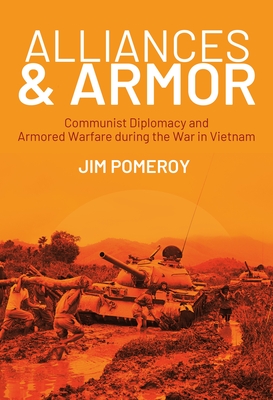Alliances & Armor: Communist Diplomacy and Armored Warfare During the War in Vietnam

Alliances & Armor: Communist Diplomacy and Armored Warfare During the War in Vietnam
The People's Army of Vietnam's decision to utilize armor as part of its warfighting strategy was a product of various geopolitical factors that surrounded Hanoi during various parts of the Vietnam War. During the First Indochina War, the People's Republic of China (PRC) emerged as the foremost communist benefactor of North Vietnam. The Soviet Union however, largely stood by. While worried by the PRC's and Soviet Union's actions during the Geneva Conference of 1954, Hanoi still felt the need to maintain good relations with both countries. This was reinforced when the Sino-Soviet split occurred in 1956 and Hanoi was forced to walk a tight rope between Beijing and Moscow. As the United States escalated its war in Vietnam, Moscow (now under new leadership) sought to increase its material support for Hanoi.
As the war progressed, Hanoi sought to fight larger battles against the Americans and their South Vietnamese allies. In order to fight larger battles, the PAVN needed more modern military equipment that only the Soviet Union could provide. This, paired with the chaos of the ongoing Cultural Revolution in China, led Hanoi to lean more towards Moscow in the latter years of the Vietnam War.
As part of this newly blossomed relationship, Moscow began to furnish the PAVN with more modern weapons including Soviet armor. Initially, the PAVN's use of armor at Lang Vei (1968) and Laos (1971) was met with some success. However, in 1972, Hanoi panicked as the United States began to reach "détente" with Beijing and Moscow. This led to fears of another Geneva and thus lead Hanoi to pursue a rushed "Easter Offensive" in March 1972 which saw ill-trained PAVN tank crews fall prey to poor planning and bad strategy. This changed in 1975 when following the Paris Peace Accords and subsequent combined arms training in the Soviet Union, the PAVN victoriously drove its Soviet armor into Saigon.
165.24Lei
165.24Lei
Livrare in 2-4 saptamani
Descrierea produsului
The People's Army of Vietnam's decision to utilize armor as part of its warfighting strategy was a product of various geopolitical factors that surrounded Hanoi during various parts of the Vietnam War. During the First Indochina War, the People's Republic of China (PRC) emerged as the foremost communist benefactor of North Vietnam. The Soviet Union however, largely stood by. While worried by the PRC's and Soviet Union's actions during the Geneva Conference of 1954, Hanoi still felt the need to maintain good relations with both countries. This was reinforced when the Sino-Soviet split occurred in 1956 and Hanoi was forced to walk a tight rope between Beijing and Moscow. As the United States escalated its war in Vietnam, Moscow (now under new leadership) sought to increase its material support for Hanoi.
As the war progressed, Hanoi sought to fight larger battles against the Americans and their South Vietnamese allies. In order to fight larger battles, the PAVN needed more modern military equipment that only the Soviet Union could provide. This, paired with the chaos of the ongoing Cultural Revolution in China, led Hanoi to lean more towards Moscow in the latter years of the Vietnam War.
As part of this newly blossomed relationship, Moscow began to furnish the PAVN with more modern weapons including Soviet armor. Initially, the PAVN's use of armor at Lang Vei (1968) and Laos (1971) was met with some success. However, in 1972, Hanoi panicked as the United States began to reach "détente" with Beijing and Moscow. This led to fears of another Geneva and thus lead Hanoi to pursue a rushed "Easter Offensive" in March 1972 which saw ill-trained PAVN tank crews fall prey to poor planning and bad strategy. This changed in 1975 when following the Paris Peace Accords and subsequent combined arms training in the Soviet Union, the PAVN victoriously drove its Soviet armor into Saigon.
Detaliile produsului










